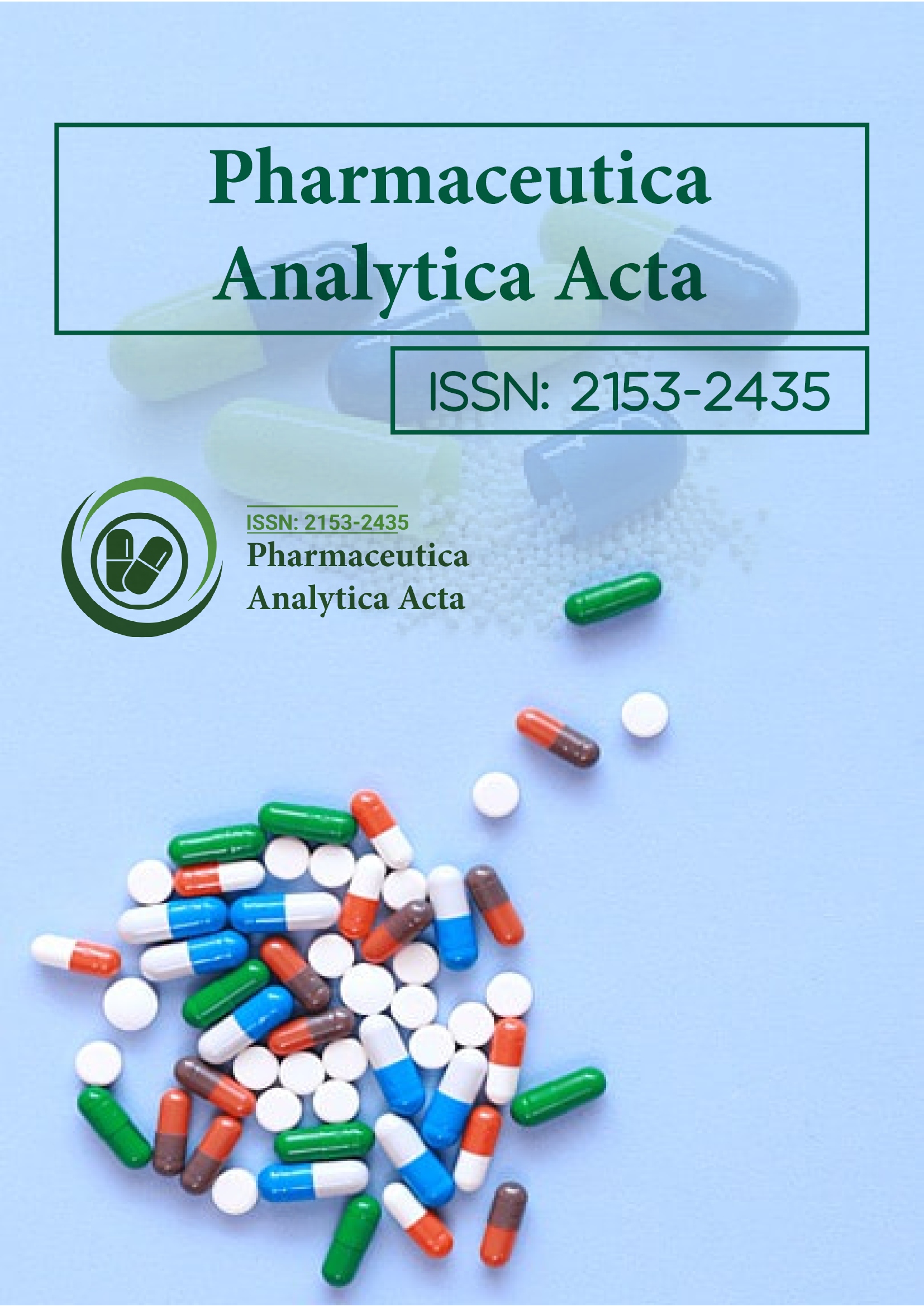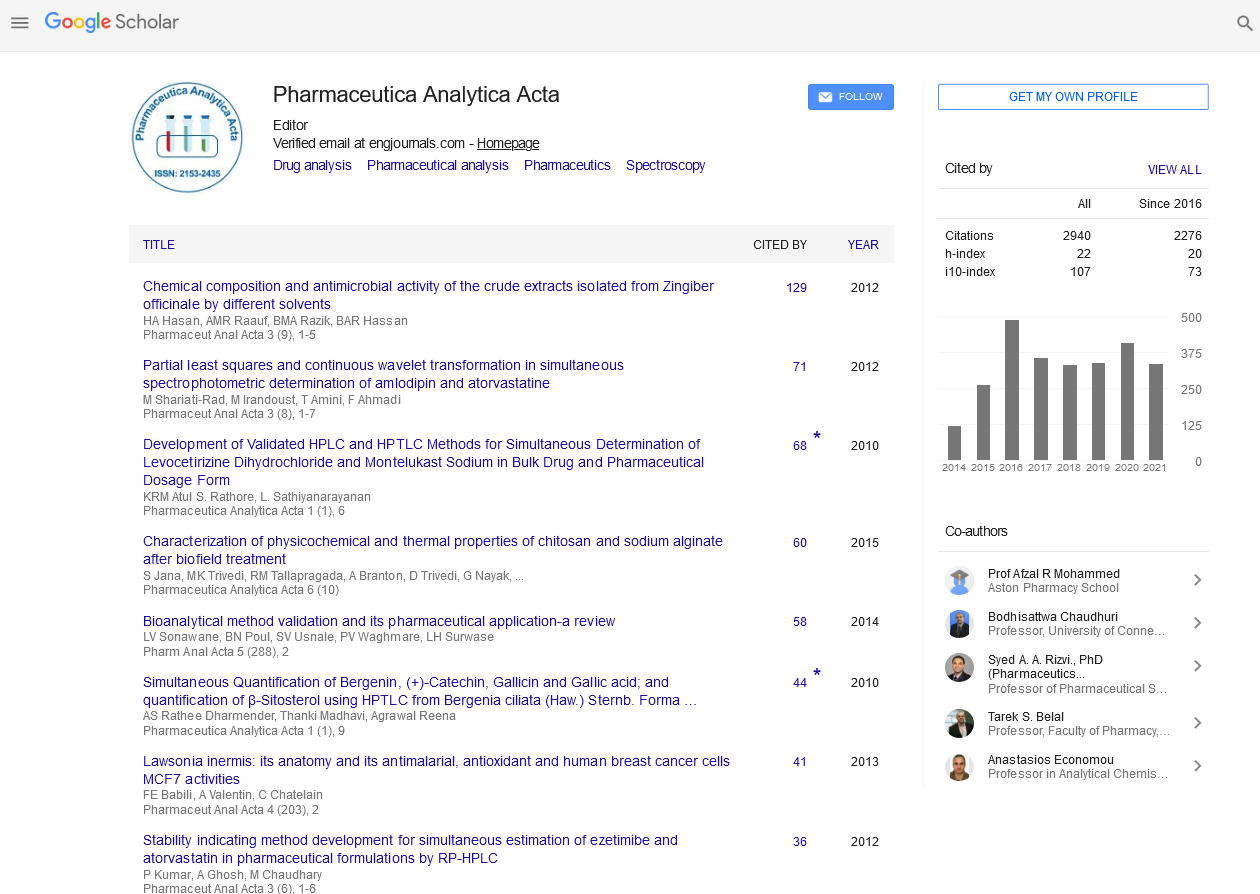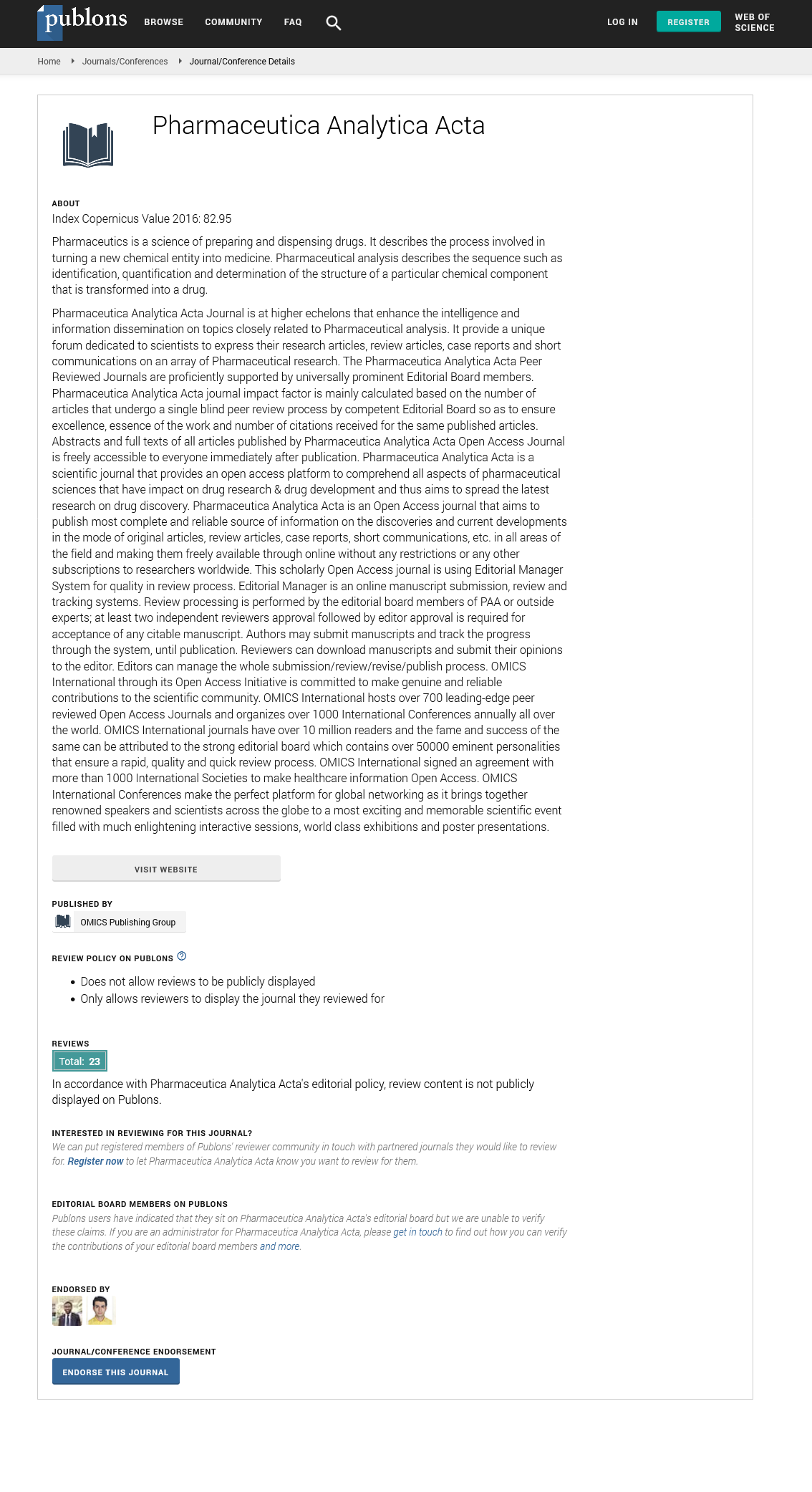Indexed In
- Open J Gate
- Genamics JournalSeek
- Academic Keys
- JournalTOCs
- The Global Impact Factor (GIF)
- China National Knowledge Infrastructure (CNKI)
- Ulrich's Periodicals Directory
- RefSeek
- Hamdard University
- EBSCO A-Z
- OCLC- WorldCat
- Publons
- Geneva Foundation for Medical Education and Research
- Euro Pub
- Google Scholar
Useful Links
Share This Page
Journal Flyer

Open Access Journals
- Agri and Aquaculture
- Biochemistry
- Bioinformatics & Systems Biology
- Business & Management
- Chemistry
- Clinical Sciences
- Engineering
- Food & Nutrition
- General Science
- Genetics & Molecular Biology
- Immunology & Microbiology
- Medical Sciences
- Neuroscience & Psychology
- Nursing & Health Care
- Pharmaceutical Sciences
Opinion Article - (2025) Volume 16, Issue 2
Impurity Profiling and Quality Assurance in Pharmaceutical Products
Mariana Oliv*Received: 31-May-2025, Manuscript No. PAA-25-30219; Editor assigned: 02-Jun-2025, Pre QC No. PAA-25-30219; Reviewed: 16-Jun-2025, QC No. PAA-25-30219; Revised: 21-Jun-2025, Manuscript No. PAA-25-30219; Published: 30-Jun-2025, DOI: 10.35248/2153-2435.25.16.817
Description
Impurity profiling constitutes a critical component of pharmaceutical analysis, providing essential information about the quality, safety and stability of drug substances and formulations. Impurities may originate from multiple sources, including synthetic processes, chemical degradation, interaction with excipients, storage conditions, or even contact with packaging materials. Understanding the nature, level and formation pathways of these undesired substances is necessary to ensure that medicinal products meet regulatory and therapeutic standards. Analytical strategies for impurity identification often begin with the intentional stress testing of drug substances and formulations are known as forced-degradation studies, these experiments expose the product to conditions such as heat, light, moisture and extreme pH levels. These treatments simulate the potential chemical changes that may occur during storage or handling, generating degradants that might otherwise appear only after prolonged periods. By analyzing these forced degradants, scientists gain insight into the stability profile of the active ingredient, determine likely degradation pathways and anticipate possible safety risks.
Once generated, degradants and other impurities require careful isolation and characterization. Chromatographic techniques are commonly employed to separate these compounds from the main drug substance and from one another. High-resolution separation ensures that even minor impurities can be detected and quantified, allowing analysts to distinguish them from excipients or matrix-related signals. This step is particularly important in complex formulations where multiple components may interfere with the detection of low-level impurities. Separation strategies often involve optimizing stationary phases, selecting appropriate mobile-phase compositions and adjusting temperature or flow parameters to achieve maximum resolution. Following separation, identification of impurities typically relies on a combination of spectroscopic and mass-based detection methods. By examining molecular weight, fragmentation patterns and chemical signatures, analysts can elucidate the chemical structure of unknown degradants. Such information is vital not only for confirming the identity of impurities but also for understanding the mechanisms by which they form. Knowledge of these pathways allows formulation scientists to modify manufacturing or storage conditions to minimize impurity generation and maintain product integrity over its shelf life.
Quantification of impurities is equally important. Even trace levels can affect a product’s safety or efficacy, particularly if the compound is toxic or reactive. Analytical workflows are therefore designed to reach extremely low detection thresholds, often employing enhanced sample preparation techniques such as solid-phase extraction or chemical derivatization to concentrate analytes and reduce matrix interference. Validated methods provide the confidence that impurity levels are accurately measured and remain consistent across batches. This ensures that any formulation released to the market adheres to strict limits set by regulatory authorities. Validation of impurity-control methods encompasses several parameters. Specificity is essential, as the analytical technique must distinguish the impurity from the active ingredient and other formulation components. Accuracy and precision confirm that measurements are correct and reproducible under defined conditions. Stability assessments verify that samples do not undergo further transformation during analysis. Additionally, establishing detection and quantification limits ensures that even minimal levels of unwanted substances can be reliably reported. Together, these validation steps form a comprehensive framework that guides laboratories in implementing robust impurity-analysis programs.
In addition to small-molecule drugs, impurity profiling is increasingly relevant for complex formulations such as combination therapies, biologics, or protein-based products. In such cases, degradation products may arise not only from chemical reactions but also from enzymatic activity, aggregation, or post-translational modifications. Analytical strategies must be adapted to account for these challenges, employing methods capable of separating closely related species and detecting subtle structural differences. These adaptations demonstrate the versatility of impurity profiling techniques and highlight the evolving demands placed on pharmaceutical analysts. Regulatory agencies around the world emphasize the importance of impurity control as part of quality assurance programs. Guidelines specify acceptable limits for known and unknown impurities, outline requirements for forced-degradation studies and mandate validation of analytical methods. Publications describing real-world applications of impurity analysis provide practical examples for manufacturers, contract laboratories and regulatory reviewers. By presenting detailed case studies of method development, optimization and validation, such literature supports industry professionals in designing procedures that comply with international standards.
Beyond regulatory compliance, impurity profiling contributes directly to patient safety. Degradants or process-related impurities may exhibit toxicity, reduced therapeutic activity, or undesired pharmacological effects. By identifying and controlling these substances, pharmaceutical scientists help ensure that patients receive medicines that are both safe and effective. Moreover, systematic impurity analysis informs stability and packaging decisions, guiding manufacturers in selecting materials and conditions that minimize degradation over time. The field of impurity profiling continues to evolve with advances in analytical technology. High-resolution separation systems, enhanced mass-based detectors and integrated software platforms now allow for faster, more sensitive and more precise identification of trace impurities. These developments enable laboratories to monitor products more efficiently, detect previously unrecognized substances and implement proactive control measures during manufacturing. In this way, impurity profiling remains an essential aspect of the pharmaceutical quality assurance ecosystem, providing both technical insight and practical guidance for ensuring the integrity of drug products.
Citation: Oliv M (2025). Impurity Profiling and Quality Assurance in Pharmaceutical Products. Pharm Anal Acta. 16:817.
Copyright: © 2025 Oliv M. This is an open-access article distributed under the terms of the Creative Commons Attribution License, which permits unrestricted use, distribution and reproduction in any medium, provided the original author and source are credited.


